Auto Accident
How to Celebrate National Bicycle Safety Month in California
| May 4th, 2020
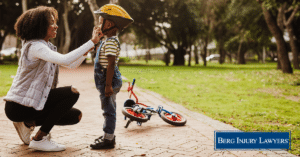 May is National Bicycle Safety Month, and it’s the perfect time of year to take stock of the best practices for cyclists and other motorists.
This is an important annual observance, especially here in California. Kaiser Health News reported that the rate of bicycle accidents in California from 2016 to 2018 was at its highest for any three-year period since the mid-1990s. Traffic accidents killed 455 cyclists in California in that three-year span. Those kinds of numbers are unacceptable for preventable incidents like bicycle accidents.
It’s in everyone’s best interest to curb the number of crashes involving cyclists. To reduce these accidents, we all need to play a role. Let’s start with what cyclists should know to ensure their next ride is a safe one.
May is National Bicycle Safety Month, and it’s the perfect time of year to take stock of the best practices for cyclists and other motorists.
This is an important annual observance, especially here in California. Kaiser Health News reported that the rate of bicycle accidents in California from 2016 to 2018 was at its highest for any three-year period since the mid-1990s. Traffic accidents killed 455 cyclists in California in that three-year span. Those kinds of numbers are unacceptable for preventable incidents like bicycle accidents.
It’s in everyone’s best interest to curb the number of crashes involving cyclists. To reduce these accidents, we all need to play a role. Let’s start with what cyclists should know to ensure their next ride is a safe one.
Tips for Bicyclists
Part I: The Gear
Whether you’re a new cyclist or a crafty veteran, it never hurts to revisit the basics, and that means equipping yourself with the right gear. Step one is finding a bicycle that is the right size for you. Bikes that are too big or too small are difficult to operate and could put you at an increased risk of crashing. Once you have a bike that suits you, you should consider the most essential piece of safety equipment every cyclist needs to own: a helmet.Get the Right Helmet
The National Highway Traffic Safety Administration offers a great list of tips to help you in your search for the best helmet. Here are its suggestions:- Measure your head to determine your size. You want a snug fit, but the helmet shouldn’t be so tight that it is uncomfortable or restricts blood flow.
- A helmet should be centered on your head and leave only two fingers worth of space above your eyebrows.
- When you buckle the strap under your chin, make sure that you can fit no more than two fingers between your chin and the strap.
- Make sure your helmet doesn’t rock when you move your head.
- As a final test to make sure the helmet is secure, open your mouth wide, as if you were yawning. You should feel the helmet pull down on your head.
Other Safety Equipment
To make sure your next ride is a safe one, use all necessary safety equipment.- When you ride during the day, wear brightly colored clothing to make yourself more visible.
- When you ride at night, wear reflective clothing so drivers can see you.
- If your bike doesn’t include reflective material, place some on your bike before riding at night, or purchase and install reflectors.
- Make sure your bike has a white front light and red rear light, especially when riding at night or in areas where visibility is low.
Part II: The Ride
You’re all set with the right equipment. Now, it’s time to follow best practices when riding. Here are five tips to help you stay safe:- When carrying items, put them in a backpack or in a bag securely fixed on the back of your bike.
- Make sure your shoelaces are tied and tucked in place.
- Always practice defensive riding—travel in the same direction as traffic, follow the rules of the road, assume motorists can’t see you, and avoid any visual or audible distractions.
- Be as predictable as possible by signaling your intentions to drivers and staying in designated biking lanes.
- If you’re a less experienced cyclist, limit your rides to sparsely trafficked areas until you feel more comfortable with your cycling skills.
Tips for Motorists
Even non-cyclists can observe National Bicycle Safety Month by sharing the road safely with cyclists. Here are the best practices for keeping cyclists safe:- Give cyclists the same space and courtesy you would any other driver.
- Never underestimate the speed of a cyclist when anticipating their movements.
- Be mindful of a cyclist’s presence at stop signs, red lights, and in parking lots.
- When passing a cyclist, leave plenty of room. If possible, pull over to another lane like you would when passing any other vehicle.
- As always, follow the rules of the road—avoid speeding, distractions, or other reckless driving habits.
Follow These Tips Year-Round
The tips above aren’t just helpful during National Bicycle Safety Month; they’re always best practice for cyclists and other motorists. As cycling becomes more popular in the Bay Area, it’s vital we all take cyclists’ safety seriously. Though we can control our actions, we can’t control those of others. When drivers cause bicyclists harm, our only option is to hold them accountable for the costs innocent victims face. If you’ve had the misfortune of being involved in a bicycle accident with a careless driver, know that you have legal options available.If You Need Help, Call the Bicycle Accident Attorneys at Berg Injury Lawyers
At Berg Injury Lawyers, we know how important it is to hold reckless drivers accountable for the harm they cause others. We’ve helped many California cyclists get compensation for their medical bills, lost income, and a host of other damages. If you or a loved one has been injured in crash, contact the California bicycle accident attorneys at Berg Injury Lawyers to schedule a free consultation with our team.Driving Under the Influence of Marijuana—What’s a Driver’s Liability?
| April 20th, 2020
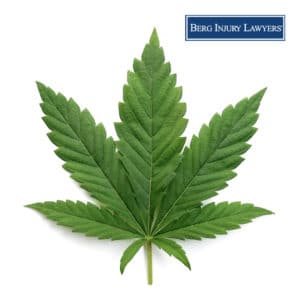 Marijuana is detected in the bloodstream of drivers who have been involved in car crashes more frequently than any other drug. Some research indicates that drivers with marijuana in their system are twice as likely to be responsible for causing crashes than a typical driver.
Whether you believe marijuana impairs a driver’s ability to safely operate a vehicle, or you think it has no impact at all, one thing is indisputable: driving with THC in your system has legal consequences.
Marijuana is detected in the bloodstream of drivers who have been involved in car crashes more frequently than any other drug. Some research indicates that drivers with marijuana in their system are twice as likely to be responsible for causing crashes than a typical driver.
Whether you believe marijuana impairs a driver’s ability to safely operate a vehicle, or you think it has no impact at all, one thing is indisputable: driving with THC in your system has legal consequences.
California Considers a High Driver an Impaired Driver
Though recreational use of marijuana is legal in California, it isn’t legal if you’re driving. The consequences of driving while impaired by marijuana can be severe, including a misdemeanor charge, probation, and license suspension. According to the California Highway Patrol, one impaired driving offense can cost a driver up to $13,500 when including insurance price raises, legal fees, missed time at work for court dates, restricted licensing, criminal records, and other related costs.What’s A Person’s Liability for Driving Under the Influence of Marijuana?
An impaired driver is a negligent driver. So, if a driver is under the influence of a mind-altering substance such as marijuana, they should be considered at fault when involved in a collision with another vehicle. However, detecting and proving marijuana impairment isn’t easy (which we’ll get to shortly). Even if a driver’s impairment isn’t detected, their mistakes still make them legally liable for the costs the other driver faces. For example, a stoned driver might rear end another vehicle because their reaction times were impaired. They may not be held accountable for driving impaired if it can’t be proven they were still under the influence of marijuana at the time of the accident, but they can be held responsible for causing the accident.How Does Marijuana Impact a Driver’s Performance?
The National Institute on Drug Abuse said that marijuana greatly affects a user’s judgment, motor coordination, and reaction time. The effects of marijuana vary widely from one user to another, which makes it much more difficult to study than alcohol. That’s because a person’s blood-alcohol content is a consistent indicator of their level of impairment, while the same is not true for marijuana. For example, once a driver’s BAC is double the legal limit, their performance behind the wheel will be severely impacted. Conversely, two people with the same level of THC in their system will be affected in very different ways. However, research shows that marijuana will impact any driver’s performance if they ingest enough of it. Some drivers who are impaired by marijuana are also driving under the influence of alcohol. THC and alcohol compound each other’s effects, so even if a driver’s BAC is lower than the legal limit, they could still be significantly impaired if they’ve also ingested THC.How Do You Know if a Driver Is Impaired by THC?
There’s currently no great way to tell if a driver is impaired by marijuana, and it’s a problem for law enforcement. In some cases, an officer who pulls a reckless driver over might smell marijuana in the vehicle or see physical signs of THC impairment, which could justify a request for blood or urine tests. But even if an officer tests the blood or urine of someone they suspect is impaired, it’s difficult for tests to reveal whether the driver used marijuana minutes, hours, or days before the crash. Though science could offer solutions that give officers a way to detect marijuana use immediately, it will take time for these technologies to be made available to local police. The fact that THC is difficult to detect not only makes policing marijuana-impaired drivers difficult, it also makes it hard for someone who was involved in a crash with a potentially stoned driver to prove it.What to Do If You Suspect the Driver Who Hit You Was High?
First, document the scene of the crash as best as possible. Take pictures of the damage to your vehicle, the license plate of the other driver’s vehicle, and the location of the crash. Call 911 to request an officer, so they can respond to the scene and file a report. If you’ve been injured, seek immediate medical attention. After you speak to the police and get the care you need, call your insurance company to tell them about the crash. Then, call an attorney, so they can remove any doubt you were at fault, and make sure you get a fair offer from the other driver’s insurance company.Need Help? Call Berg Injury Lawyers
If you’re involved in a crash with an impaired driver, you deserve payment for all the costs you face. We help our clients get compensation for medical bills, property damage, lost income, and any other costs they face. Contact our California auto accident attorneys today to schedule a free case review with our team. Let us help you explore all your available legal options.Distracted Driving Awareness Month: Why Distraction Threatens Your Safety
| April 13th, 2020
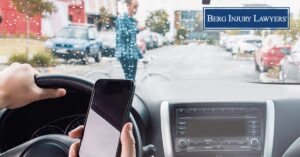 Every driver is tempted by distractions. We all have smartphones buzzing with notifications that demand our attention, favorite songs that compel us to blast our car stereos, or chatty passengers who draw our focus from the task of driving.
However, giving into these distractions has consequences. The safety of drivers, passengers, and anyone else on or near the road is constantly at stake whenever drivers get distracted by texts and other notifications.
We want to tell you why distracted driving awareness matters, who it affects, and what you should do to combat it.
Every driver is tempted by distractions. We all have smartphones buzzing with notifications that demand our attention, favorite songs that compel us to blast our car stereos, or chatty passengers who draw our focus from the task of driving.
However, giving into these distractions has consequences. The safety of drivers, passengers, and anyone else on or near the road is constantly at stake whenever drivers get distracted by texts and other notifications.
We want to tell you why distracted driving awareness matters, who it affects, and what you should do to combat it.
5 Facts About Distracted Driving
To illustrate how serious the threat of distracted driving is on our roads, consider these five statistics:- Each day in the United States, approximately nine people are killed and more than 1,000 are injured because of distracted driving.
- At any given point in the day, nearly one out of 10 drivers are using mobile devices.
- More than two-thirds of respondents to a AAA survey reported talking on cell phones while driving during the previous month.
- Nearly one-third of survey respondents admitted engaging in distracting behaviors fairly often or regularly.
- Hands-free isn’t risk-free: One study found that listening to someone talking decreased activity in the part of the brain associated with driving by 37%.
What Are California’s Laws on Distracted Driving?
California law bans all driver use of hand-held devices. Certain drivers, like minors and school bus drivers, are prohibited from using cellphones entirely, even as hands-free devices. You can also be given a “reckless driving” or “speed unsafe for conditions” ticket for driving while performing distracting activities, such as drinking, eating, grooming, or reaching for objects on the floor.Who Is Affected by Distracted Driving?
We all have a stake in raising distracted driving awareness. That includes distracted drivers, their victims, and the loved ones of those victims. Few drivers intend to cause themselves or other drivers harm. Causing a crash because you couldn’t resist the temptation to pick up a mobile device could ruin a person’s life. Consider the lives of all the people connected to those who cause crashes and those that suffer injuries because of another driver’s inattention. The chances are good that you or someone you know has been affected by distracted driving in some way.Are Certain Drivers More Susceptible to Distraction?
Most California’s drivers know our state’s “Put Your Phone Down. Just Drive” campaign that targeted drivers between the ages of 16 and 24. There’s a reason that younger, less-experienced drivers are often the focus of safety awareness campaigns; drivers under the age of 20 are involved in a disproportionate number of distraction-related crashes compared to drivers of other age groups. However, young people are not the only distracted drivers. For example, a study from the AAA Foundation for Driving Safety reported that drivers age 55 and older were distracted for more than eight seconds longer than younger drivers when programming navigational devices or using their car stereo.How to Observe Distracted Driving Awareness Month
The most important thing you can do is purge distracting activities from your routine. If you’re tempted by your smartphone, place the device in an out-of-reach place inside your vehicle to avoid the urge to use it. If you’re a parent, setting a positive example could influence your child to be equally diligent when they get behind the wheel. Several apps and smartphone settings are capable of preventing distracting notifications. Consider using Apple’s Do Not Disturb While Driving mode, the AT&T DriveMode app, or Samsung’s In-Traffic Reply app. You might also consider spreading the word about the dangers of distracted driving. April is Distracted Driving Awareness Month, which is the perfect opportunity to talk about this important issue. Don’t be afraid to tell a friend or family member to put away their phone if you notice them texting while driving.When Distracted Drivers Cause Accidents in California, Call Our Team
We hope that safety awareness campaigns make our roads safer, and you never need to deal with the fallout of a distracted driving accident. However, if you do, know that the law is on your side. Never pay the price for another driver’s mistakes. Holding that driver accountable for their carelessness is a key part of making our roads safer for everyone. At Berg Injury Lawyers, we’ve represented countless clients in Northern California who have been injured by reckless drivers, including drivers who injured others because they were texting while driving. If you’ve been injured by a distracted driver, we can help. Insurance companies will want you to accept the first settlement they offer. In some cases, they’ll deny your claim entirely. Before you speak to an insurance company’s representative, talk to an attorney. Contact the California car accident lawyers at Berg Injury Lawyers and schedule your free consultation today.Are California Safety Laws Too Lax for Teen Drivers?
| April 6th, 2020
 California drivers know that our state’s traffic laws are some of the strictest in the nation. However, some safety groups, such as the Advocates for Highway & Auto Safety (AHAS), say that when it comes to teen drivers, our laws might not go far enough.
AHAS evaluates laws concerning distracted driving, seat belt usage, and teen drivers to determine their effectiveness at reducing accidents. Though California scores well overall, it falters when it comes to teen driving laws.
California drivers know that our state’s traffic laws are some of the strictest in the nation. However, some safety groups, such as the Advocates for Highway & Auto Safety (AHAS), say that when it comes to teen drivers, our laws might not go far enough.
AHAS evaluates laws concerning distracted driving, seat belt usage, and teen drivers to determine their effectiveness at reducing accidents. Though California scores well overall, it falters when it comes to teen driving laws.
Why Does California Fall Short on Teen Driving Laws?
Though California currently bans first-year drivers from driving between 11 p.m. and 5 a.m., AHAS suggests that the ban should begin an hour earlier and include drivers up to the age of 18. The Centers for Disease Control and Prevention (CDC) says that 40% of crashes involving teens (as both drivers and passengers) happen between 9 p.m. and 6 a.m. California also bans first-year drivers from transporting passengers under the age of 20 unless they’re traveling with a licensed parent, driving instructor, or driver age 25 or over. AHAS suggests that California extend that restriction to include drivers up to the age of 18. AAA Foundation for Traffic Safety research suggests that fatality rates for teen drivers increased by 45% when their passengers are other teens. The fatality risk increases even more (56%) for occupants of vehicles that are involved in crashes with teen drivers. For each additional teen passenger that a teen driver transports, the greater the risk of a crash.Understanding the Risks Young Drivers Face
Car crashes are the leading cause of death among teens, who are three times more likely than drivers age 20 and over to be in a fatal crash. AHAS’s push to broaden the scope of these bans is a much-needed effort, and it’s backed by research; a 2017 National Household Travel Survey found that the crash-per-mile rate for 16-year-old drivers is 1.5 times greater than it is for 18- and 19-year-old drivers. Studies consistently show that teen drivers engage in riskier behavior than older drivers. For example, teens are more likely than older drivers to speed and follow vehicles too closely. They’re also less likely to wear seat belts.California’s Teen Driving Laws Get Some Things Right
Drivers under the age of 18 are prohibited from cell phone use of any kind when behind the wheel of a moving vehicle, even with hands-free functionality. Because younger drivers are more likely to engage in distracting activities while driving, laws that restrict mobile device use of any kind could save lives. Critics of these laws cite a study showing that, despite stricter laws in California regarding mobile device usage by drivers, the rate of drivers using their phones behind the wheel actually increased the following year. But advocates insist that laws take time to make an impact, and they often reference California’s seat belt laws to make their point. When the state announced its seat belt requirement in 1985, seat belt use increased from about 20% to 40%. By 1997, compliance had risen to about 88%. By 2016, compliance rates reached approximately 97%.Preventing Teen Driver Crashes Requires More Than Just Laws
Studies show that parents have many ways to keep teen drivers safe, and it starts with setting a good example. A 2018 study found that approximately half of parents driving with children in their vehicles talked on their cell phones, while one-third read text messages in front of their children while driving. Parents also expect their children to respond when they call, even when their teens are driving. Research suggests that more than half of teens who talk on their phones while driving talked to a parent, compared to 46% who talk to friends. A parent’s presence inside the vehicle is enough to make a difference; AAA found that when a teen driver is accompanied by someone age 35 or older, their fatality risk decreases by 8%.If You’re Injured in a Crash, Contact Berg Injury Lawyers
Berg Injury Lawyers represents injured people throughout Northern California to help get them the compensation they deserve. We know how quickly things can go from bad to worse when you’ve been injured by a reckless or distracted driver, so consider contacting an attorney as quickly as possible after an accident. If you need legal assistance, we’re here to help. Contact the California car accident attorneys at Berg Injury Lawyers today to schedule a free case review.Pros and Cons of New Vehicle Technology
| February 10th, 2020
When you read an article about self-driving cars or interactive dashboards, what do you feel? Do automated vehicles fill you with dread, or are you excitedly anticipating the day when you can get in your car and have it drive itself? As a law firm that pays close attention to road and vehicle safety, we know that these advances will present both good and bad consequences for all of us. In other words, there are pros and cons of new vehicle technology, which we should all consider as we cruise into this brave new world. Before we dive into the potential downsides of emerging technologies, let’s focus on the perks.Pro – A Safer Commute
More than 35,000 people die in vehicle crashes every year in the United States. For each of those deaths, even more motorists are involved in nonfatal crashes that often result in injuries. The biggest upside of improved vehicle technology is the potential to reduce the number of overall crashes. This is exactly what the U.S. Department of Transportation and countless road safety advocates are hoping automated systems will accomplish. Officials also hope that automation will bring less traffic and improved fuel efficiency in vehicles.Pro – A Better Experience for Motorists
From smart displays on windshields to brain wave technology that helps drivers avoid crashes, new vehicles could offer features we can’t even imagine. Many of these innovations might dramatically improve our experience behind the wheel and, in some cases, improve our health. For example, vehicle technology could not only get better in diagnosing problems with vehicles, but also diagnosing the health of drivers. Ford is currently developing technology that monitors a driver’s heart health through sensors placed in the seats of its vehicles.Con – The Growing Pains of New Technologies
Over the years, manufacturers have made safety features available that were anything but safe. For example, seatbelts and airbags are some of the most basic but useful features in vehicles. However, several incarnations of the technologies have posed a threat to vehicle occupants. The latest examples of potential dangers include Takata airbags that could cause shrapnel injuries when deployed and allegations of Honda seatbelt defects. Automation is likely to become integrated into our vehicles slowly as cars edge toward being fully autonomous. During this transition, we will need to learn how to operate new semi-autonomous systems. That could present an entirely new learning curve for drivers. So far, manufacturers and safety officials don’t seem to know who will be responsible for educating buyers on how to operate semi-autonomous vehicles safely.Con – Smart Cars are Vulnerable to Hackers
An increasingly digital world has made our lives easier in many ways. But we are also more vulnerable to fraud and hackers. As our vehicles become more reliant on technology, they too are susceptible to hackers. Cybersecurity concerns prompted a 2015 recall involving 1.4 million vehicles after researchers discovered that it was possible to disable vehicles’ brakes and steering capabilities while they were on the highway. Hackers have already found ways to access the information of drivers and even shut down some engines remotely.Understanding Your Rights as a Consumer
You likely have your own list of pros and cons of new vehicle technology. If you’re skeptical of automakers’ capacity to address some of our biggest road safety challenges, we understand your reservations. Manufacturers often make mistakes that have serious consequences for all of us. Consider some of the fatal defects in vehicles over the past few decades. From GM’s faulty ignition switches to Takata’s defective airbags to the top-heavy design of Ford’s Bronco II, manufacturers haven’t always inspired hope in car buyers. When a defective product harms a consumer, the consumer have the right to hold the manufacturer accountable through product liability claims. These claims don’t just offer consumers a pathway to compensation; they also make the market safer for others who might purchase potentially dangerous products.Schedule a Free Case Assessment with Berg Injury Lawyers
The good news is that you have the right to hold a manufacturer accountable if they sell you a product that causes you harm. If you have been sold a defective vehicle or vehicle part, we encourage you to contact the team at Berg Injury Lawyers. Our California defective product lawyers have years of experience handling these claims. We believe that unless consumers take a stand against negligent manufacturers, companies will continue to sell dangerous products to buyers. Don’t pay the price for a manufacturer’s mistakes. We know you might have questions you want answered about your legal options, which is why we offer free consultations. Fill out our online contact form today to get started with a case evaluation.Stay Safe on Super Bowl Sunday
| January 27th, 2020
Whether or not you’re a football fan, Super Bowl Sunday is always a big event on social calendars around California. And unfortunately, it’s also one of the worst days of the year for motor vehicle accidents. Between drunk, fatigued, and distracted drivers, your risk of being hurt is far higher than usual on Super Bowl Sunday. According to a 2013 study conducted by the Automobile Club of Southern California measuring traffic accidents over the course of 10 years, there is an average of 75% more alcohol-related crashes on Super Bowl Sunday than on all the other Sundays in January and February. And that number is only growing. The same organization conducted a similar study back in 2004 found a 41% increase in alcohol-related crashes on Game Day. That’s why the team at Berg Injury Lawyers put together these tips. They’re useful for anyone attending a Super Bowl party this year, whether it’s at the home of a friend, family member, or coworker, or at a bar or restaurant.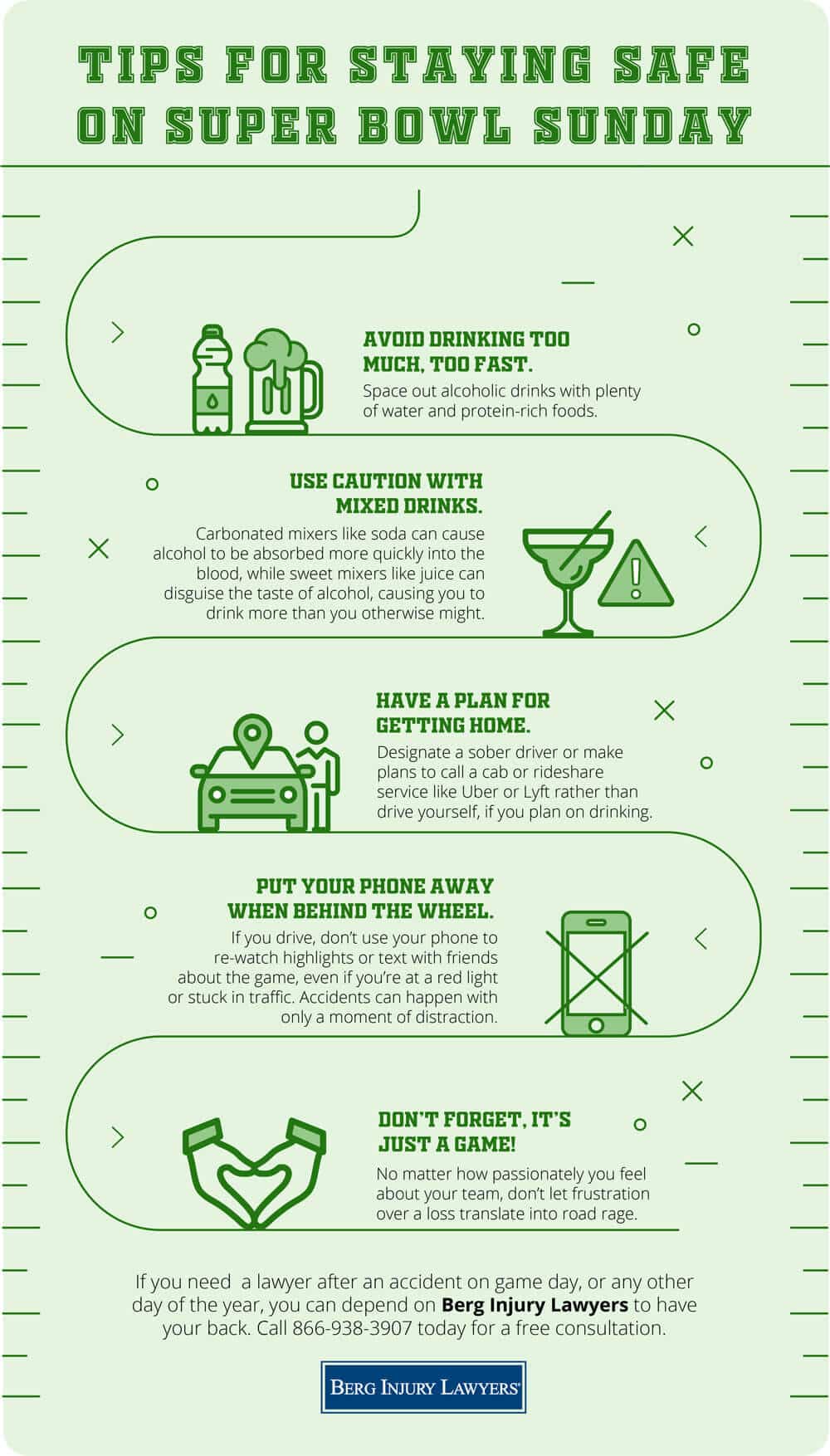
Tips for Super Bowl Party Hosts
Car accidents aren’t the only potential danger awaiting partygoers. If you are planning on having friends and neighbors over to watch the Big Game, follow these tips to protect your guests, and protect yourself from liability if someone gets hurt.- Make sure the path to and from your door is clearly lit and free of ice and snow. This will prevent guests from slipping or tripping.
- Take everyone’s keys at the door. Friends don’t let friends drive drunk, but it can be hard to follow that rule when some of your guests make an Irish exit and leave without saying goodbye.
- Politely make sure each guest knows how they are getting home. If at the end of the night it looks like a guest may be unsafe to drive, have alternate arrangements ready. That might mean calling a cab or allowing them to stay until it’s safe for them to drive home.
- Make sure non-alcoholic drink options are available, and never serve alcohol to an underage guest. If an underage guest has alcohol at your home and gets into an accident driving home, you could be liable.
- Stop serving alcohol at the end of the third quarter to allow everyone time to sober up. This is also a good time to bring out coffee and dessert.
- Be aware of any food allergies your guests might have. Some food allergies are airborne, meaning the person does not have to eat or touch the food but only needs to be in the same room to experience symptoms.
- Always clean your knives and cutting boards between each step when preparing food to avoid contamination.
- Cook all meat to the proper internal temperature. Don’t leave food sitting at room temperature for more than two hours, even if that means ferrying it back and forth between the table and the fridge or oven.
- If you are a pet owner, keep your dog in another room throughout the party. Even if your dog is normally friendly, you may not know how they will react to a large number of unfamiliar people in their territory or unexpected loud noises like the cheers at a touchdown.
We’re Here to Help After Super Bowl Injuries
Big events like the Super Bowl offer many opportunities for injuries to occur. Injuries might come in the form of car accidents, slips, falls, dog bites, or any other unexpected event. Knowing how they happen and how to prevent them is the best way to protect yourself from liability and injury. But when others are less careful than you, you may still end up injured due to someone else’s negligence. When that happens, we want to help. Contact the team at Berg Injury Lawyers today for help getting the compensation you deserve after your accident. We will gather evidence proving you were not at fault for your injury. We’ll also calculate how much you may be owed. We’ll factor in your medical bills and all other injury-related damages, including emotional harm or lost income. Our track record of success helping injured victims get full compensation spans decades, and we’re ready to put our experience to work for you and your loved ones. Contact us today for a free case review.Everything You Need to Know about Road Rage
| January 20th, 2020
At Berg Injury Lawyers, we spend a lot of time helping people who were hurt in crashes caused by negligent drivers. Most of the time, that negligence occurs in the form of speeding, driving while impaired, driving while distracted, running red lights and stop signs, or following other vehicles too closely. And while those drivers can and should be held liable for the damage and injuries they caused, they likely didn’t intentionally set out to harm others. However, there’s another common driving behavior that occasionally results in crashes that can have a more intentional and even malicious undertone: road rage. Everyone experiences frustration and sometimes even anger when stuck in traffic or after being cut off on the highway, but road rage is a completely different phenomenon. People who experience road rage may lose control of their emotions and their behavior, causing them to act aggressively and potentially harm others through traffic accidents.How to Spot and Handle Road Rage in Others
The National Highway Traffic Safety Administration says that road rage incidents are on the rise in America. The number of deaths related to road rage increased from 80 in 2006 to 467 in 2015—an increase of nearly 500 percent. Knowing how to spot the signs of road rage in other drivers won’t just help you avoid a crash, but it could also save your life. The next time you’re driving, keep an eye out for drivers who exhibit the following behaviors:- Speeding—Drivers who are angry often take out their aggression by increasing their speed, often significantly over the posted speed limits for the roads they’re on. If you encounter a speeding driver, change lanes and move out of the way as soon as you can do so safely.
- Tailgating—Whether they’re angry over a perceived slight, or they’re impatient and angry, drivers experiencing road rage may tailgate others. Never slam on your brakes when you’re being tailgated. Instead, change lanes and allow the other driver to pass.
- Honking—People experiencing road rage often want others to be aware of their anger and frustration. One of the easiest ways to do that is by honking their horns. If someone is frequently honking or holding down their horn, they may be about to act aggressively and should be avoided.
- Staring/gesturing—When the objects of their frustration are nearby, drivers with road rage may stare or gesture at them, hoping to get a response or incite a reaction. Never respond to a driver who is attempting to antagonize you. Instead, continue looking straight ahead.
Tips for Defusing Road Rage in Yourself
Road rage isn’t always extreme cases of aggression. It can also be defined as taking unnecessary risks due to frustration and anger, both of which are common emotions for drivers to experience from time to time. Keep a cool and calm head in even the most trying traffic situations by following these tips:- Give yourself plenty of time to reach your destination—Running late is one of the most common causes of bad decisions behind the wheel, including speeding, following too closely, and running red lights.
- Get plenty of sleep—Being sleep-deprived is a major source of accidents on its own, but it can also make you more prone to impatience and even road rage. If you feel sleepy, take a nap before heading out on the road.
- Listen to soothing music—The music you listen to have can have a major effect on your mood and your behavior. Calm, relaxing, and easygoing music with between 60 and 80 beats per minute is more conducive to safe driving than up tempo or aggressive music.
We Help Road Rage Victims Get the Money They Deserve
When we build claims for innocent victims of auto accidents, one of the first things we do is find evidence that the other driver was negligent. Drivers who let their anger, impatience, and frustration get the best of them aren’t fulfilling their responsibilities to drive safely, and that’s why they can be held liable for any injury-related expenses they cause. If you or someone you love was hurt because of an aggressive driver, we want to help you get maximum compensation for your medical bills, lost wages, and pain and suffering. Successfully building a case that road rage or other negligent behaviors led to your crash requires years of experience, but we have a track record of compensation won for our clients. Contact us today for a free consultation to find out how we can help you.Prevent Winter Driving Disasters with These Maintenance Tips
| January 13th, 2020
Winter can be harsh on roads and on your vehicle, even in Northern California. Although our winters aren’t as cold and icy as they are in other parts of the country, it’s still important to make sure your vehicle is properly winterized and ready for the impacting of dropping temperatures. In addition to helping you avoid inconvenient and potentially dangerous vehicle breakdowns, proper car maintenance can also reduce your risks of being involved in an accident. Use the tips in our infographic below to ensure your vehicle remains in tip-top shape throughout the winter and well into spring.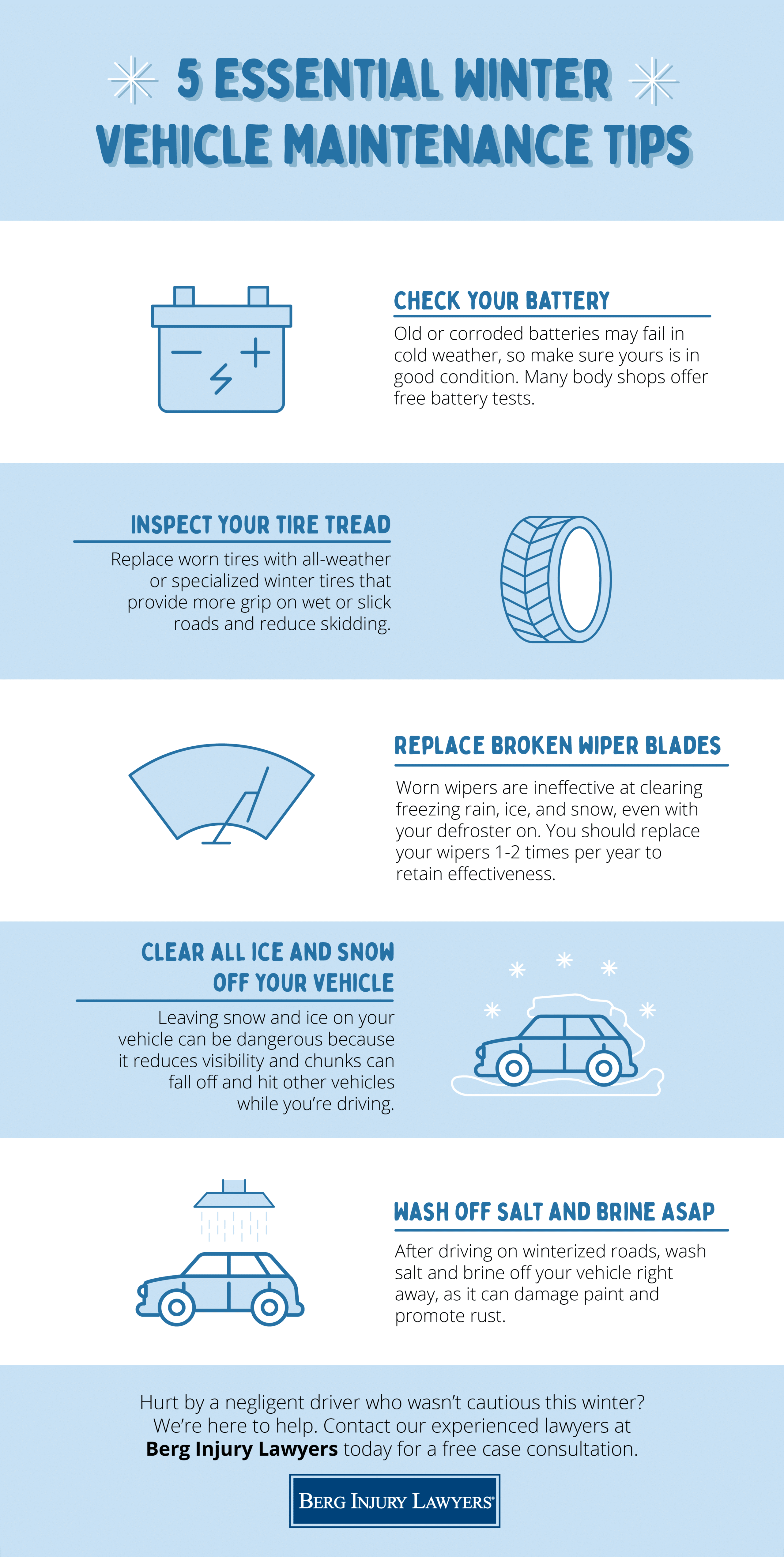
Avoid These Common Vehicle-Related Winter Mistakes
Now that you’ve learned what you should do to reduce your risks of experiencing a breakdown or a crash this winter, it’s time for a quick rundown of things to never do. The following mistakes are common, and they can result in serious damage to your vehicle and even dangerous accidents:- Don’t defrost your windshield with hot water—Nothing melts ice as quickly as a bucket full of scalding hot water, but dumping one on your vehicle’s windshield will clear your wallet even faster. Hot water on frozen glass can mean a cracked windshield and an expensive repair.
- Don’t swerve to avoid potholes—Potholes can be seriously damaging to your vehicle. In some cases, they can even total cars, trucks, and SUVs. But most potholes don’t cause much, if any, damage, and swerving to avoid one can increase your chances of colliding with another vehicle.
- Don’t clear only a small porthole in your windshield—If your windshield ices over, make sure you clear it completely. Doing so can be time-consuming and might make you late for work, but driving with most of your visibility blocked can be extremely dangerous.
- Don’t leave home without checking the weather—Winter storms are often predicted several days out. Being on the interstate or highway many miles from home when roads suddenly become slick from freezing rain can be dangerous, and you may end up trapped for several hours.
- Don’t leave your fuel tank sitting more than half-empty. Condensation can collect in a half-empty fuel tank, and if it freezes it can damage your fuel lines.
We Help Auto Accident Victims Get Compensation All Year Long
At Berg Injury Lawyers, our auto accident attorneys know that winter weather can make roads much more dangerous, even in California. But we also know that crashes can occur at any time and place, whether it’s the dead of winter or the middle of summer. That’s why our legal team is ready to jump into action to help victims get the money they deserve after accidents that weren’t their fault. If you or someone you love was hurt because of a negligent driver, we want to get you the compensation you deserve. Speeding, driving while intoxicated, driving while distracted, or even driving with a windshield full of ice and snow are all careless behaviors, and when those behaviors result in crashes, we think drivers should be held accountable. Contact us today for a free consultation. We want to put our experience to work for you.How Social Media Can Hurt Your Personal Injury Claim
| January 6th, 2020
Many of us enjoy staying in touch with friends and family and engaging with like-minded people through social media platforms like Facebook, Twitter, Instagram, Snapchat, and YouTube, to name just a few. If you aren’t on them all, odds are you use at least one. We love sharing major events in our lives on social media, good or bad, and a serious injury definitely counts as one. However, if you have filed or are thinking about filing a personal injury claim to recoup your medical expenses after an accident, your social media posts could seriously harm your chances of getting the money you need. Social media posts are considered part of the public record, even if your accounts are set to private, and the insurance company’s lawyers don’t need a warrant to access them. To put it another way, anything you share can and may be used against you by the insurance company when reviewing your claim or in a civil lawsuit.Your Posts
Statements Minimizing Your Injuries A status update to the people who care about you saying something as simple as “I was in a crash but I am okay,” or “I’m just glad it wasn’t worse” could be taken out of context to argue that your injuries are not as severe or painful as they actually are. Accidental Admissions of Fault Posts along the lines of “I didn’t see them coming” or “I didn’t have time to stop” could be used by the defense to argue that the accident was your fault for not paying attention to your surroundings or not taking reasonable corrective measures. Posts that Contradict Your Compensation Claim Accidents, especially car accidents, are confusing and stressful, and everyone’s memory is fallible. If you accidentally post something that differs from how you described the crash in the police report or in your compensation claim, the defense will use it against you. Ranting When you’ve been injured and your life disrupted, you have every reason to be angry, especially when your injury is due to someone else being negligent. However, ranting about your injury or the responsible party online could hurt your claim. The defense could argue you are not injured and are only filing for spite or revenge. Oversharing About Your Life As strange as it seems, even posts that have nothing to do with your accident could hurt your chances of getting compensation. For example, posts about stressful or upsetting recent events in your life, such as a break-up, could cause the defense to argue that your emotional state at the time caused your crash.Your Photos
Photos that Misrepresent Your Physical Health Photos that appear to depict you doing activities that your injuries should prevent, even if you were not participating in the activity, or if the photo was taken before your accident and only posted later, could be used to argue your injuries are being exaggerated. Photos that Misrepresent Your Emotional Health Unfortunately, even photos of you looking happy and smiling (and who doesn’t smile when being photographed?) could be used as evidence your accident wasn’t as traumatic as it really was.Your Friends and Family
It’s not just your own photos you should be wary of. If you are tagged in a photo by a friend that appears to show you happy and healthy, this could also be used as evidence against you. Furthermore, if you post about your accident, and a friend jokingly replies with a statement like, “I told you to get off your phone!”, even if you and your friend both understand it’s a joke, the insurance company or court may not. And if they believe you contributed to your own accident by not paying attention to the road or speeding, it could hurt or ruin your chances of getting compensation altogether.Your Online Activity
Avoiding all mention of your accident online isn’t a guarantee that the insurance company won’t be able to manipulate what you post, either. If you are trying to get compensation for the pain and emotional distress your injuries caused, but you continue to post as normal, the defense may try to argue that this proves that your injury didn’t seriously affect your life or mental health.What You Can Do to Reduce Your Risk
The best way to ensure that your social media habits don’t accidentally harm your claim is to not use social media at all until after your claim is resolved. However, these steps can help protect you if you do continue to post.- Set all your social media accounts to private.
- If possible, adjust your settings to prevent other users from being able to share your posts or to post comments on your accounts.
- Do not accept any new friend requests, especially from people you don’t know, while your claim is ongoing.
- Speak privately with friends and family and request they do not post anything about you, or especially your accident, until your claim is resolved.
- Avoid mentioning your settlement even after your claim is resolved. If your settlement involves a confidentiality agreement, posting about it could result in your settlement being revoked.
Hurt in a Car Accident? Call Berg Injury Lawyers.
If you were injured in a car accident, you need to contact the team at Berg Injury Lawyers right away. We have years of experience dealing with insurance companies, and we know all the shady tricks they like to pull. Contact us today for a free consultation on your case.Winter Driving Tips
| December 30th, 2019
Although San Francisco and the Bay Area rarely experience freezing temperatures, winter weather and its impact on roadways can still be a concern for people living throughout Northern California. Whether you’re driving through some of the mountainous regions of the state this winter, or you’re taking a road trip to stay with friends and family for the holidays, it’s important to be aware of the risks associated with winter driving and the best ways to reduce your chances of being involved in an accident. Inclement weather is one of the most common causes of auto accidents, and the accumulation of snow and especially black ice on roadways means less traction for tires and increased distances required for slowing down and stopping. The combination of those effects makes it easier for drivers to lose control of their vehicles and skid, spin out, or be unable to stop in time before colliding with vehicles in front of them.Be Cautious and Safe This Winter
At Berg Injury Lawyers, it’s our goal to help injured drivers and their passengers get compensation after crashes, but we know that the best course of action is to prevent crashes altogether. You can stay safer and do your part in making roadways less dangerous this winter by following these steps: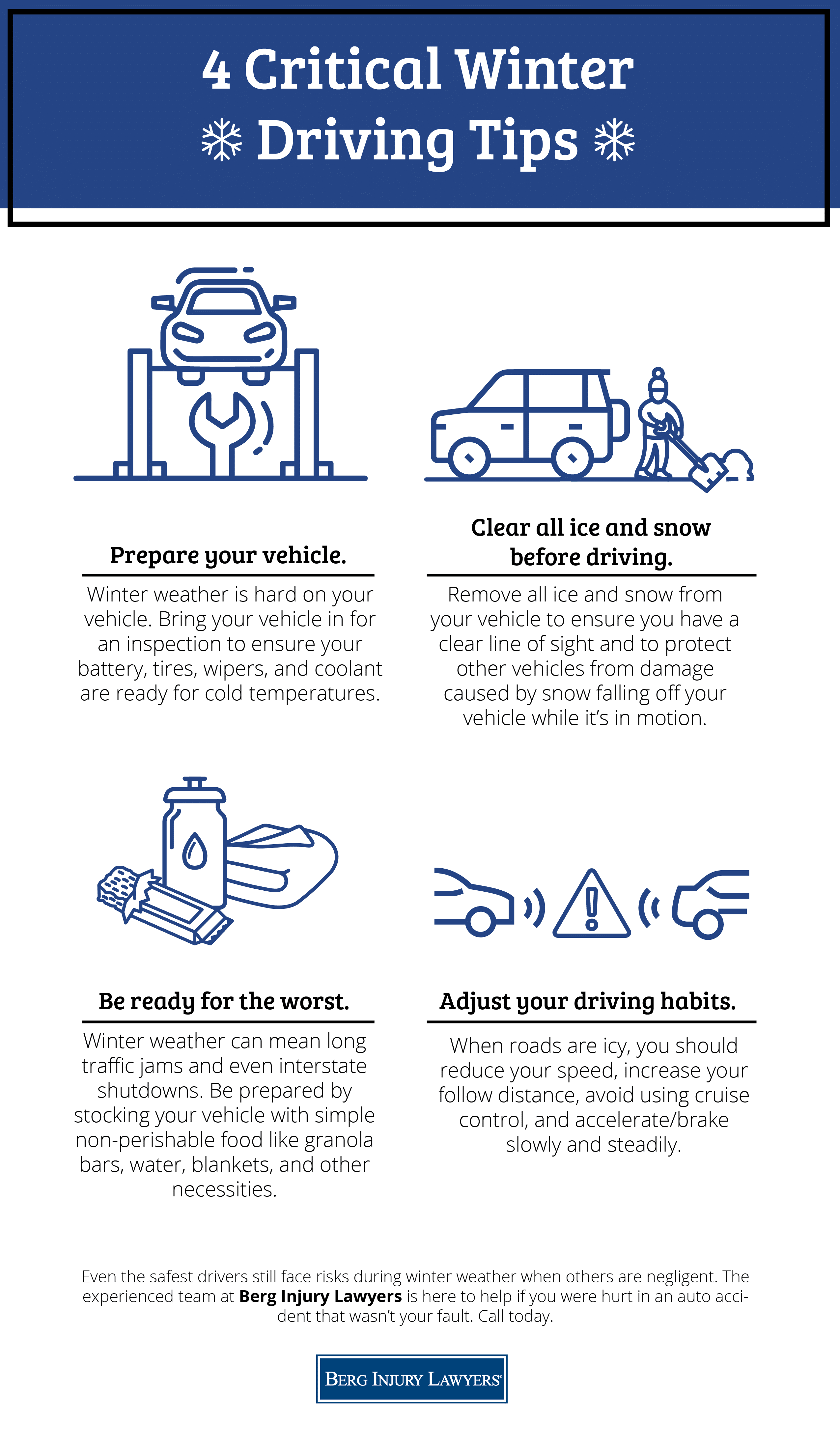 Modern advances in vehicle safety technology, such as anti-lock brakes, traction control, all-wheel drive, stability control, and innovations in winter tire design have made cars, trucks, and SUVs safer to drive in winter weather. However, those safety features shouldn’t be taken for granted, and it’s important to always drive cautiously when there’s a chance that roadways may contain snow or ice.
Modern advances in vehicle safety technology, such as anti-lock brakes, traction control, all-wheel drive, stability control, and innovations in winter tire design have made cars, trucks, and SUVs safer to drive in winter weather. However, those safety features shouldn’t be taken for granted, and it’s important to always drive cautiously when there’s a chance that roadways may contain snow or ice.


